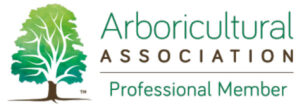
Technical advances in tree safety assessment - a case study.
A client came to us with concerns about a tree within the grounds of her property which she intended to sell.
The above image shows an aerial inspection being carried out of the cavity within a mature horse chestnut tree which was subject to a local authority tree protection order.
The decay cavity is most likely the result of poor pruning works in a species of tree that has a soft heartwood.
The tree which was located close to houses and built structures had been poorly managed and the risk of failure is therefore expected to be high.
For a detailed inspection we use tomography as shown in the graphs below is the use of sound wave impulses fired through a tree.
In this case eight points of measurement are selected and soundwaves are fired across the tree stem. From this display of the tree, we determined that decay was on the northwest side of the tree stem around the cavity.
Resistograph
Recommendations:
In this case a planning application for tree works was made which was species specific to a horse chestnut. It was likely the local authority would have refused these works until the findings of the detailed assessment survey had been completed giving an understanding of the extent of the decay and this combined with the visual assessment of the tree, conclusions can be made.
It also provides the client with some certainty that risk is being reduced, in that the tree can be retained but as a smaller managed feature, still providing amenity and wildlife value to the landscape.
The tree will be continuously monitored using this initial survey as a base point to review and make future decisions.

Please contact us for advice or help with regards to your trees. [email protected]









